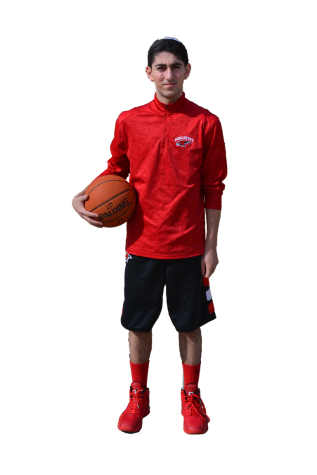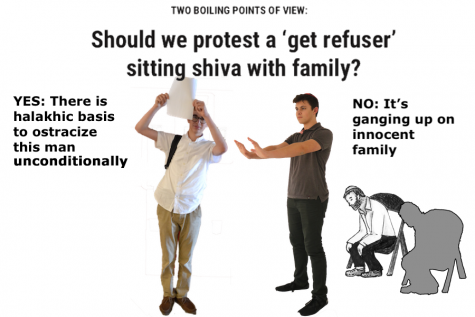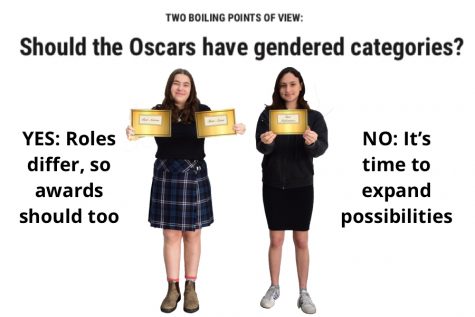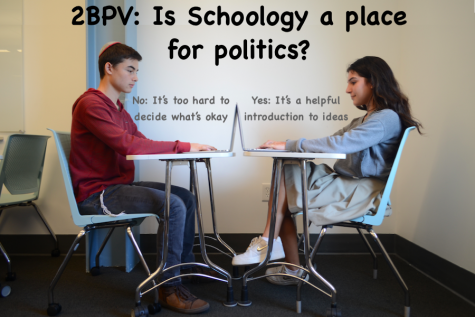TWO BOILING POINTS OF VIEW: JV sports: Too many players on the bench?
Yes – It’s unfair to everyone
By Jonah Kaye, Staff Writer
There are 16 kids on the boys’ JV basketball team. The reality is that many of these kids hardly play at all in games, and if they do, it is usually the coach feeling sorry for a student and giving him 30 seconds  of garbage time.
of garbage time.
It is extremely unfair for coaches to string along an entourage of players they have no need for and who don’t play. Coaches need to cut players who are not good enough or will not play on the team. It’s more fair to the players in the long run.
It’s ridiculous to even call many of these first meets “tryouts,” when every kid is going to make the team. The coaches must not understand the countless hours of time that each player must commit to the team, after school and during, and the countless classes they are forced to miss for games during the day. If the coaches did understand, they would feel guilty about making some players ride for two hours each way to a game, only to sit on the bench for two hours, all the while missing school.
The coaches must also not understand the vicious perpetual cycle they create: you can’t get better by sitting on the bench, and therefore you have no hope of getting off the bench.
And they must not understand that sometimes, the hard reality of “you’re cut” is infinitely more merciful than the dishonest statement, “You are all an important part of the team.” Being coddled is a distortion of reality. It’s better to teach an important life lesson – that sometimes you will fail. Failure creates the opportunity for other pursuits, or real improvement and growth.
If I had been cut as I should have been from the baseball team in 10th grade, I would have either had another year to pursue other sports, or I would have decided that I really wanted to play baseball, and worked hard to get better and make the team next year.
If I had been cut as I should have been, other players on the team who were actually going to play could have had more time in practice to get better. Less attention would have been wasted on someone who wasn’t really going to play.
And if I had been cut as I should have been, my grades wouldn’t have suffered and I could have missed less class.
Shalhevet sports teams need to stop being nice and start placing a limit on the number of players on a team. It will be better for the players the long run and the team as a whole.
No – All who want to learn should have a chance
By Benny Zaghi, Sports Editor
What do you do when you have more players than seats on the bench? What  do you do when half of the team is just watching the game from the sideline?
do you do when half of the team is just watching the game from the sideline?
This year, Athletic Director Ryan Coleman decided to accept everyone who tried out for the Junior Varsity basketball team, leaving more players than usual who would most likely not play so much during the season. There wee 17 players on the JV squad, and only five can play at a time.
This is not necessarily a bad thing. It is great to see a high interest in the sport of basketball.
First of all, it allows more kids to be involved in a co-curricular. Whether they ever play competitively as a Firehawk or not, being on JV gives students who want to improve a chance to strengthen their game, even if they’re only going to play at the park or in their driveways.
Second, it’s good for everyone for there to be more players at practice, especially during long breaks from school when many are away on family vacations. At times like these, it not only doesn’t hurt the team to have many players just in case some do not show up, but rather it is beneficial.
Also, students at Shalhevet are diverse and unique, having different passions that they would like to pursue. Capping the number of JV players would prevent people who love basketball from playing the game.
Although there are upsides to having many players on the team, there are those who say that it lessens the focus on each individual player, and that it really doesn’t make sense competitively to have people on the team who do not play.
Competitively speaking, a large JV team makes sense. Tryouts, which would be used to cut people, are not an exact science. They can be stressful for underclassmen or anyone trying out for a sports team in high school for the first time. The pressure can get to you, leading to mistakes and screw-ups that really don’t portray the type of ballplayer you are. Some new players don’t really show their talents until later in the season.
Playing on JV gives newcomers the chance to work with coaches, improve and show their worth if they didn’t in the tryout. For example, in my sophomore year when I was on JV, my friend Oren Rad was not getting the amount of minutes he wanted coming off the bench. But later in the season, Oren proved to be a great shooter and was rewarded a starting spot on the team.
There is a group of sophomores – among them, Eytan Kent, Joseph Zaghi and Eitan Reimer – who played JV for two years now and are now going to play Varsity. They came off the bench and didn’t play that much in their freshman year and in their next year they started.
Playing time and coaches’ focus on players is an actual problem, and there is a way to solve it without cutting the roster of JV. Instead, Shalhevet should another boys basketball team: a freshman sophomore team or “frosh-soph team.”
This would not only of avoid cutting any players, but would give Coach Ryan the time to focus on his Varsity players while preparing the next generation to step in and benefit from that that attention when they’re ready.
There’s more to being on a school basketball team than just the playing time, and there’s more to playing time than interscholastic competition. Shalhevet is right to not forget about the underdog. Seeing the plethora of people who stayed on the team despite a lack of minutes is proof that beginners can grow into winners. Just ask the teams we defeated this year – and the state and Sarachek champions that we almost did.










